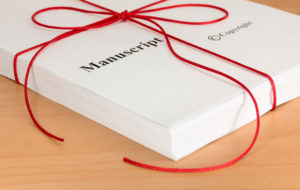The presentation of YOUR NOVEL for submission – Layout, illustrations and Acknowledgements
Writing a wonderful novel is just one part of the path to publication. Putting together a compelling and error-free submission is also vital. I have put this blog post together to address questions I am often asked by aspiring novelists wanting to make money from writing a book. This is all covered in the write a novel online course I offer but this guide may be useful for anyone at the stage of getting a book published now.
For more information on my creative writing courses, follow this link: https://mariafrankland.co.uk/creative-writing-courses/
Cover Sheet
You must include an overall cover sheet which includes your name and contact information, the book title, genre and word count.
Chapter Headings
Make sure these are consistent throughout your novel, in terms of whether they are emboldened, underlined, capitalised or centred. If chapter numbers they should either be numbers or words (one, two) throughout.
Font
Make sure the font is legible, (12 point is usual) and consistent throughout your novel, use Aerial or Times New Roman.
Text should be double spaced throughout and left aligned (not fully justified)
Margins
Standard margin size on A4 is 2.54cm on all sides.
Presentation
All pages should be numbered. Furthermore, they should all have a header set (in a smaller font size than the main text) that gives the author name and the book title in italics.
Layout
Paragraphs do not need a gap between them. Only leave a space if there is a change of section.
There is no need to use * to indicate a section break unless it occurs at the top or bottom of a page.
Never indent the first line in a new chapter or the first line after a section break.
The beginning of every other paragraph should be indented. This includes paragraphs that consist of dialogue.
Illustrations
Illustrations within a novel bump up the cost of printing a book considerably and should be agreed with a publisher well before any time, expense and trouble are incurred. This is a similar scenario with the book jacket. Often an author will have a say in cover design but the publisher will have the final say.
At present, there seems to be a slight leaning towards artwork as cover illustrations rather than photography but that varies from publisher to publisher. Many publishers have links with their own illustrators and photographers so be prepared for this.
Acknowledgements
From a legal point of view, you should acknowledge any part of your novel that has come from any other source or has already been published elsewhere, seeking permission as necessary. These acknowledgements are usually listed at the end of the book along with any thanks you want to offer for any expertise or assistance you have benefitted from in the writing of your book.
The cover illustrator/photographer, publisher and printer must be acknowledged at the front of the book and space can be taken up for dedications (e.g. to family or other inspirations)
Quality of Printed Work (If submitting by hard copy)

Don’t print your work off when your printer is running out of ink or has problems. Faint or miscoloured text, or text with horizontal or missing lines, is difficult to read and therefore unlikely to be considered. Print on one side of white plain A4 only.
If you follow these guidelines you are far more likely to be considered for publication. Polish your novel and associated submission documents until they shine and don’t give publishers or agents any reason to reject you. Good luck! For more information on the crafting of a novel or a poetry collection, follow these links:
www.writeanovelinsixmonths.com
www.writeacollectionofpoetryinsixmonths.com